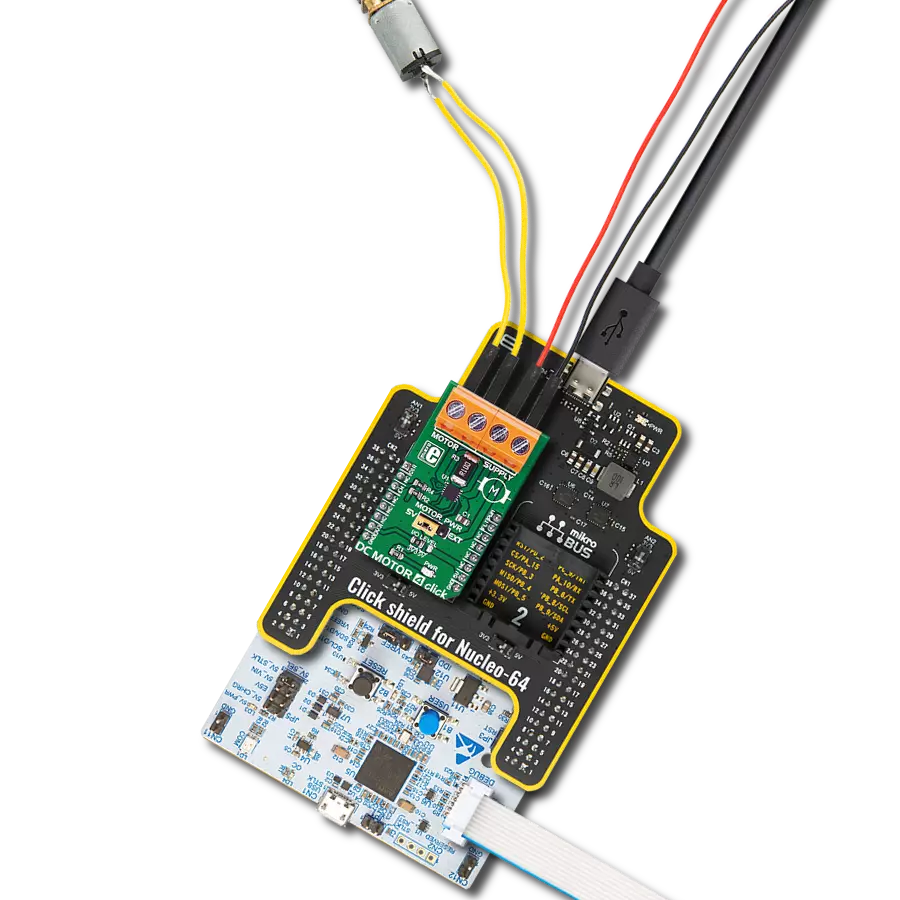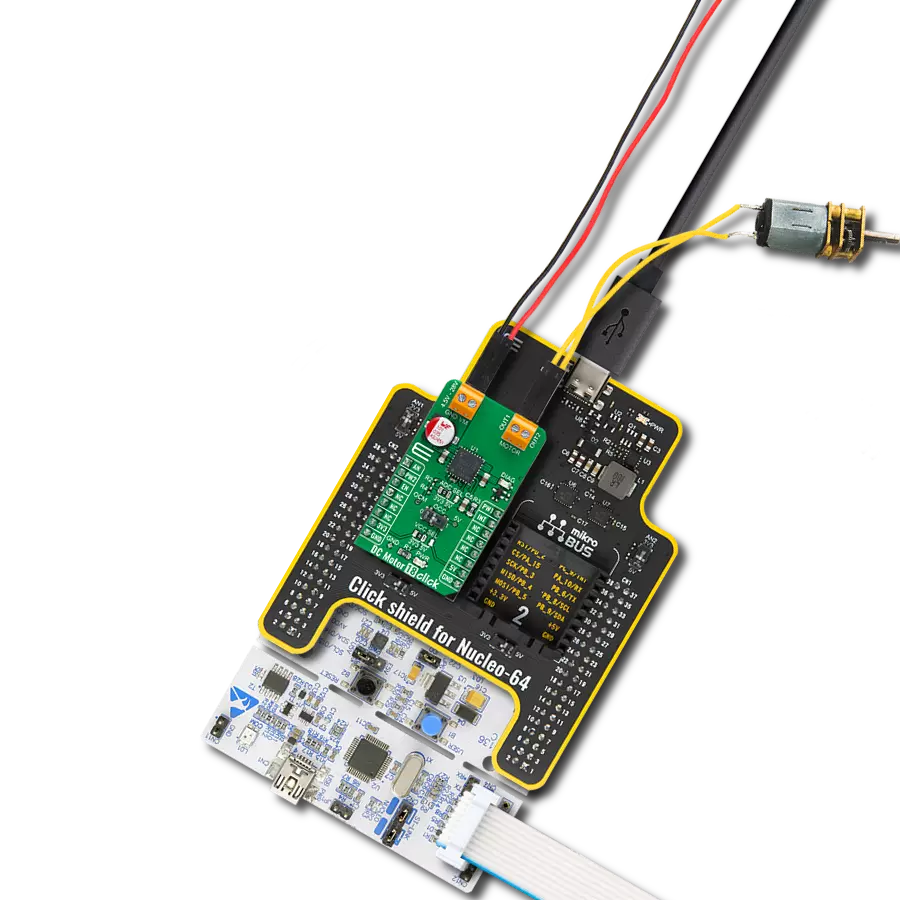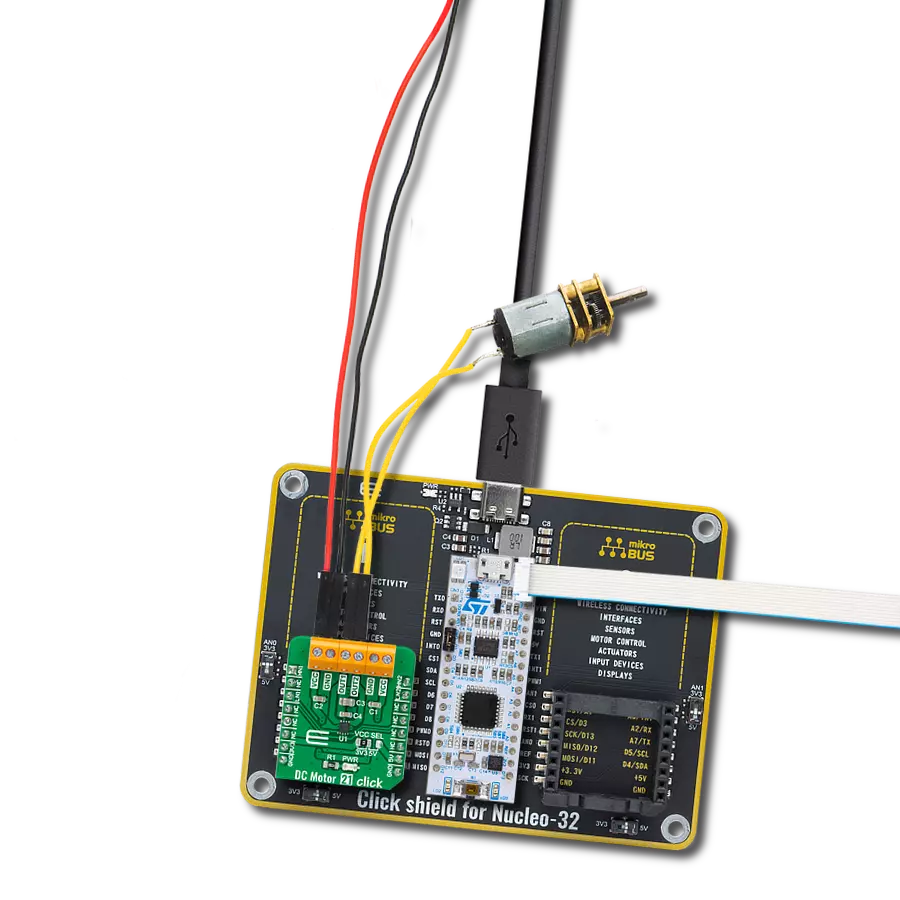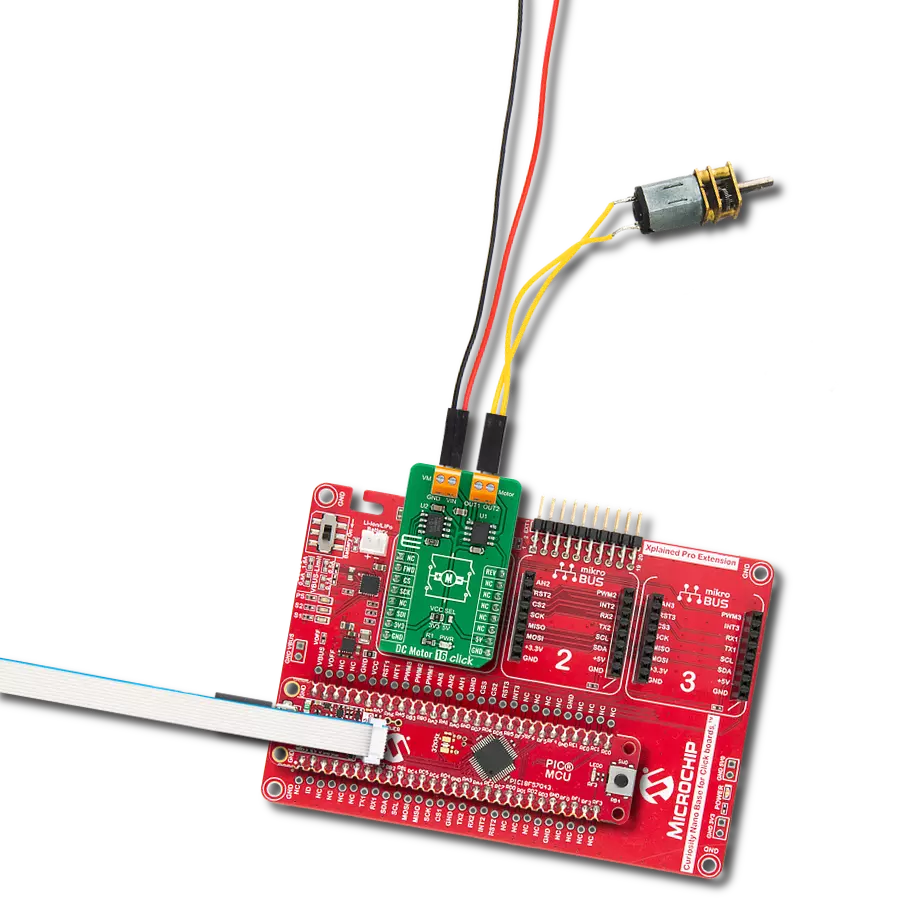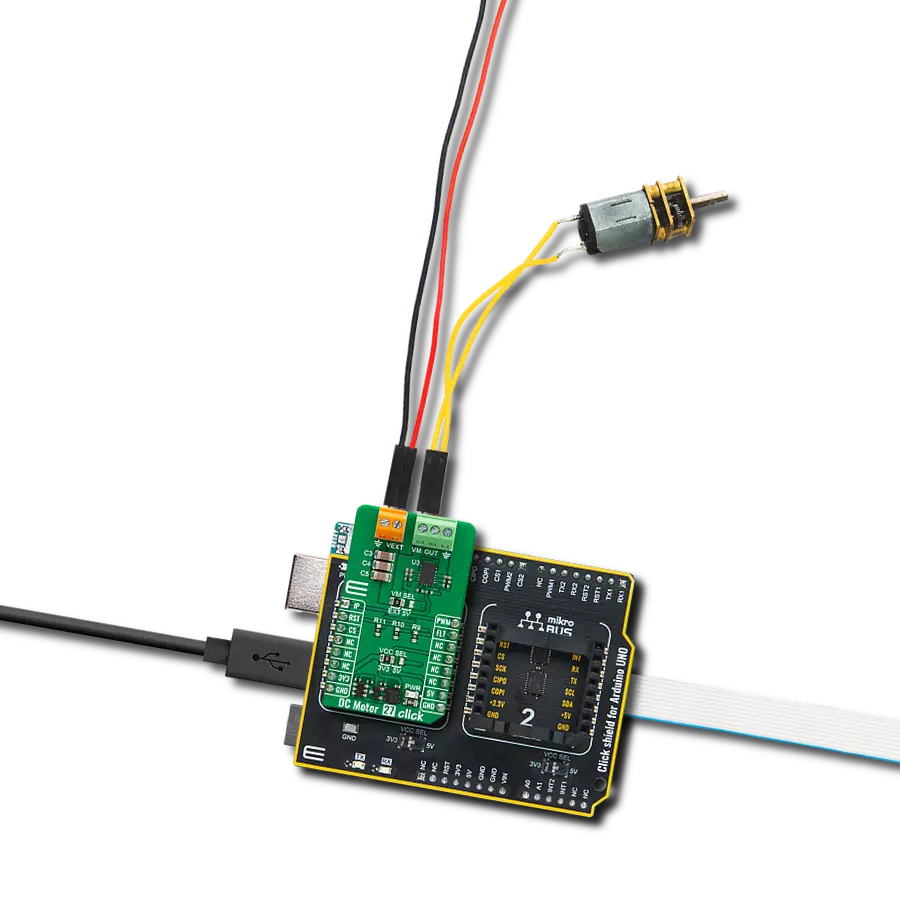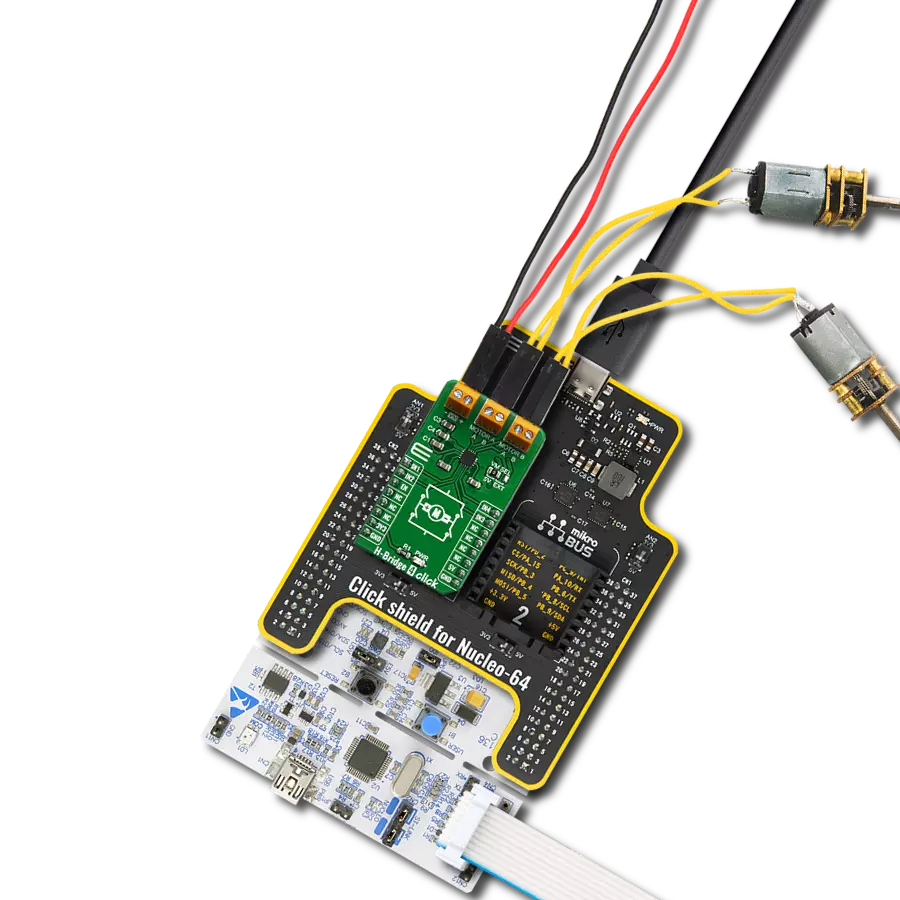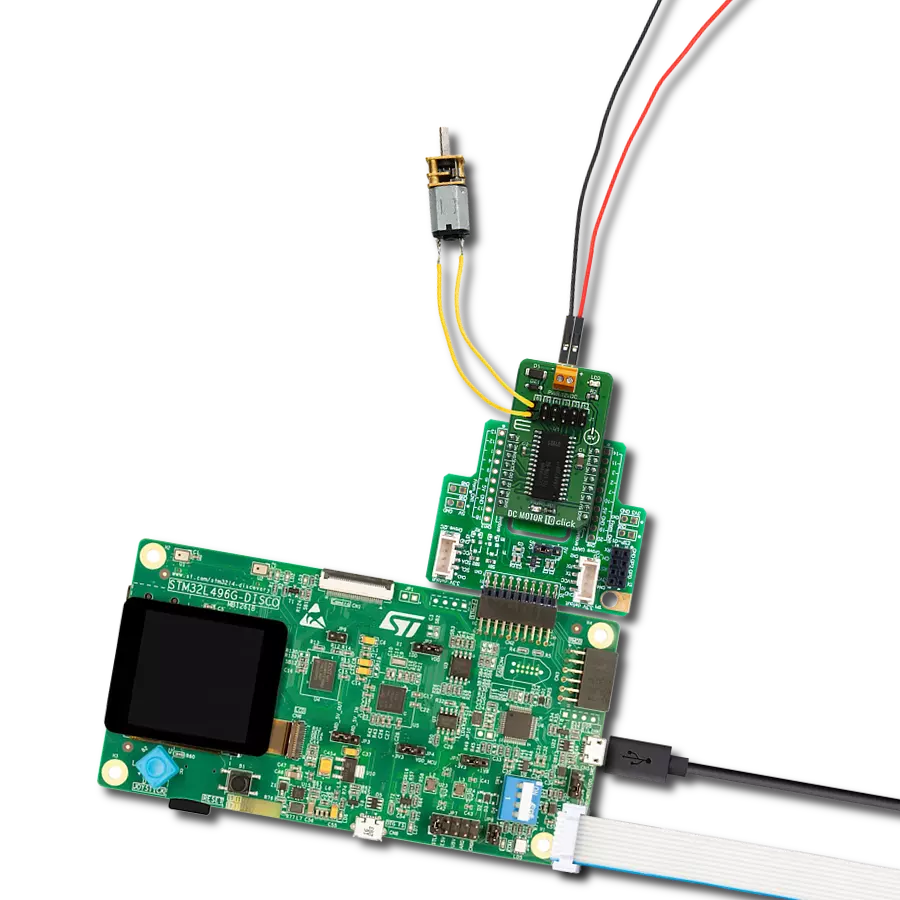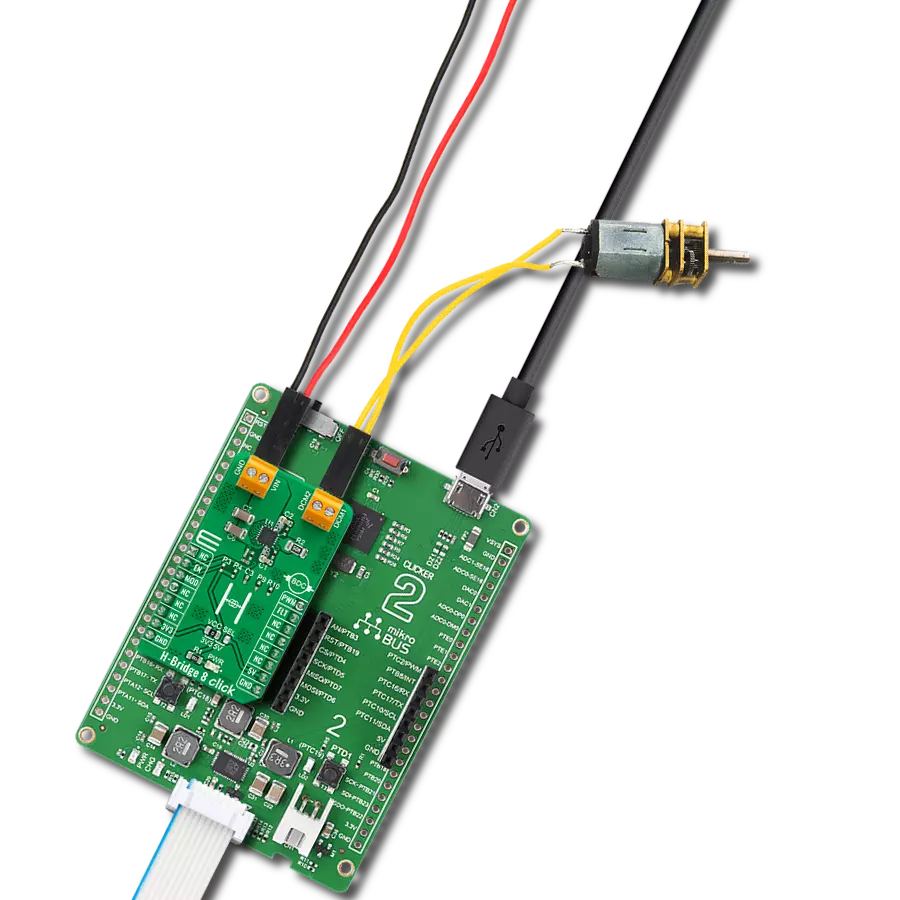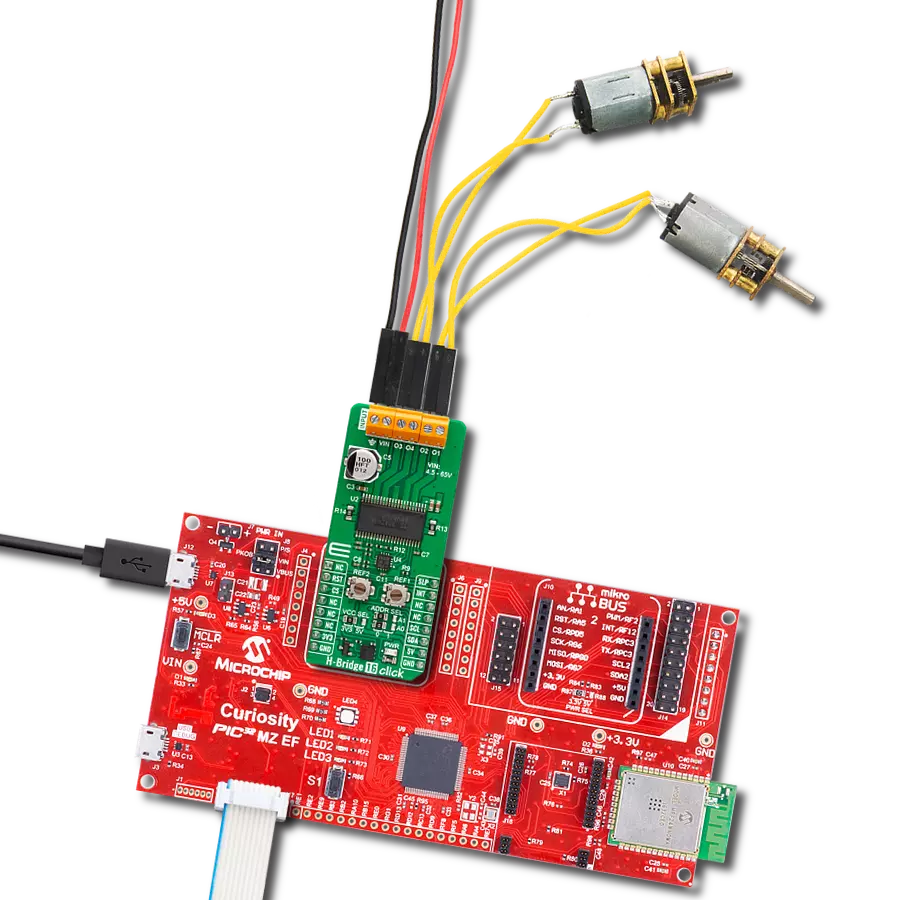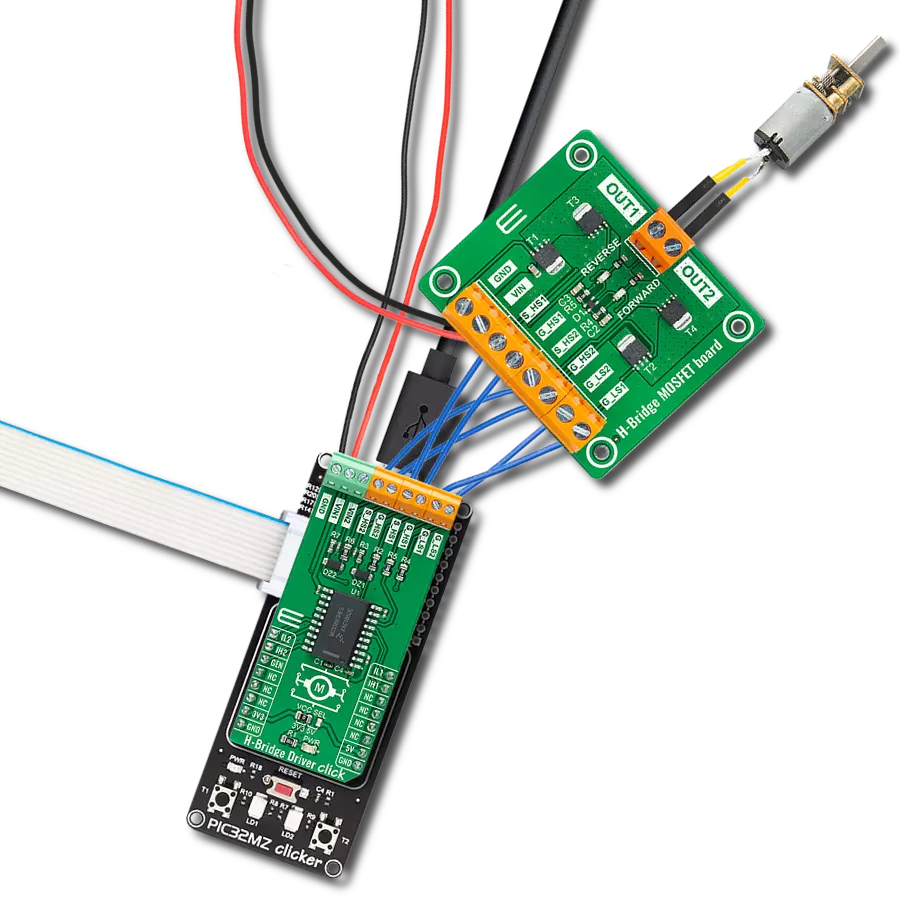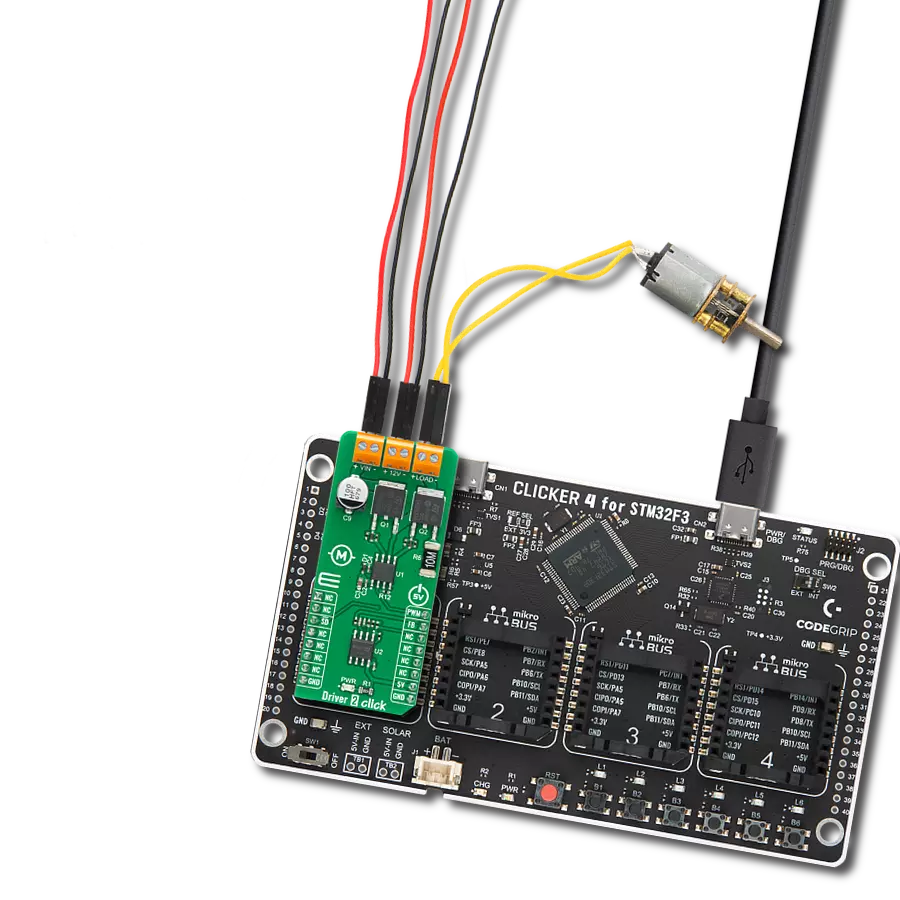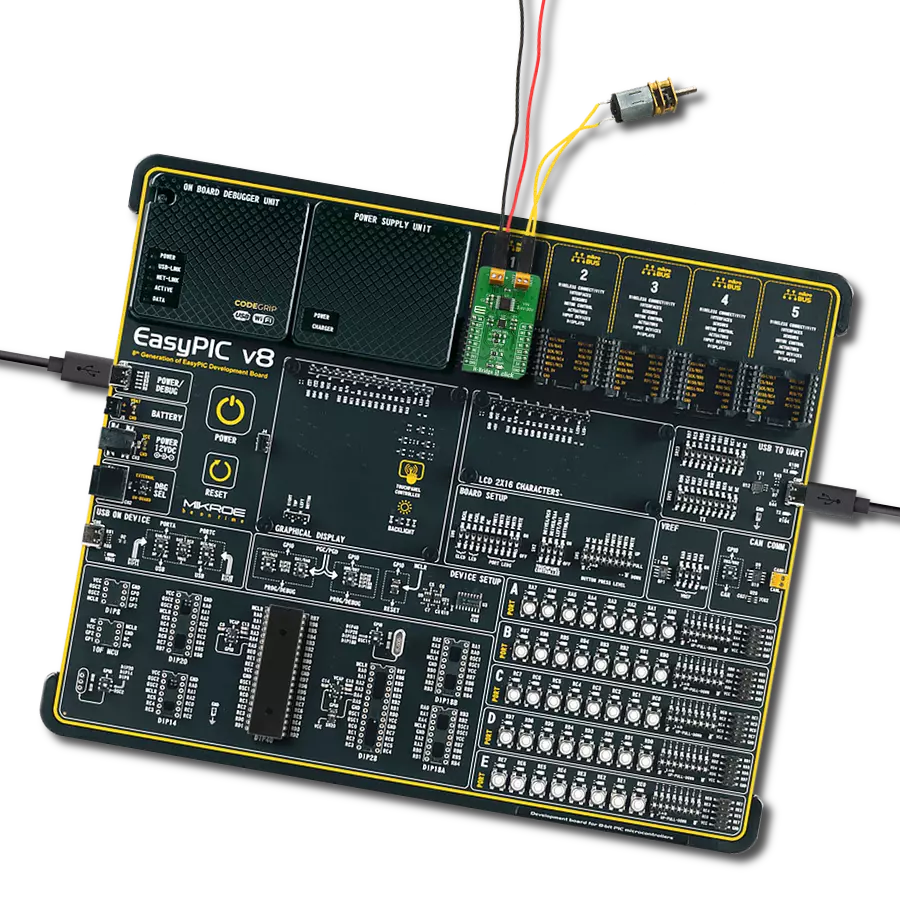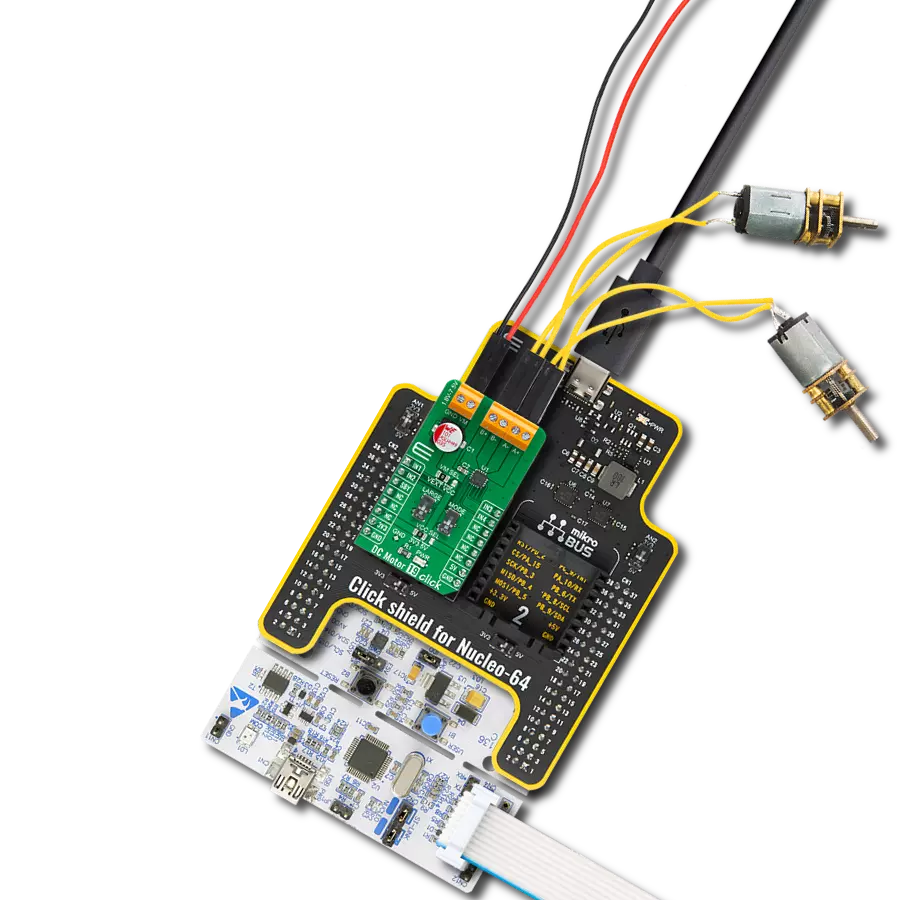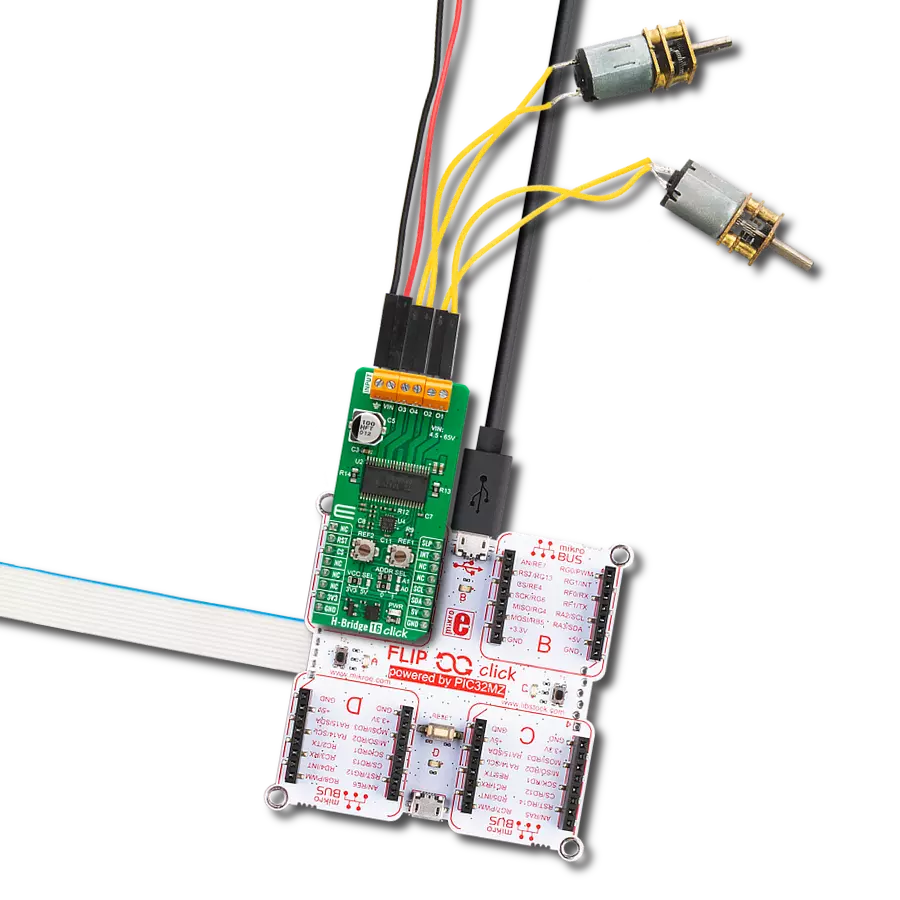Experience the future of motion control with our advanced brushed DC motor solution, designed to meet the most demanding industrial applications, from robotics to automation.
A
A
Hardware Overview
How does it work?
DC Motor 25 Click is based on the A3908, a fully integrated low-voltage motor driver for DC motors from Allegro Microsystems. This Click board™ provides all the input and output capabilities necessary to drive DC motors (OUT terminal), alongside monitor diagnostic functions. The A3908 is rated for an operating voltage range compatible with both mikroBUS™ power rails and output currents up to 500mA, programmable via an external I2C-configurable digital potentiometer, the AD5171 from Analog Devices. The A3908 also
has complete protection capabilities like thermal shutdown, undervoltage lockout, and crossover current (shoot-through) protection, allowing robust and reliable operation. Logic pins labeled IN1 and IN2, routed on the default positions of RST and PWM pins of the mikroBUS socket, are provided to control the motor direction of rotation, brake, and standby modes. When both pins are in a high logic state, the A3908 goes into high-side brake mode, which turns on both source drivers. There is no protection during braking, so
care must be taken to ensure that the peak current does not exceed the absolute maximum current. This Click board™ can operate with either 3.3V or 5V logic voltage levels selected via the VCC SEL jumper. This way, both 3.3V and 5V capable MCUs can use the communication lines properly. Also, this Click board™ comes equipped with a library containing easy-to-use functions and an example code that can be used as a reference for further development.
Features overview
Development board
Arduino UNO is a versatile microcontroller board built around the ATmega328P chip. It offers extensive connectivity options for various projects, featuring 14 digital input/output pins, six of which are PWM-capable, along with six analog inputs. Its core components include a 16MHz ceramic resonator, a USB connection, a power jack, an
ICSP header, and a reset button, providing everything necessary to power and program the board. The Uno is ready to go, whether connected to a computer via USB or powered by an AC-to-DC adapter or battery. As the first USB Arduino board, it serves as the benchmark for the Arduino platform, with "Uno" symbolizing its status as the
first in a series. This name choice, meaning "one" in Italian, commemorates the launch of Arduino Software (IDE) 1.0. Initially introduced alongside version 1.0 of the Arduino Software (IDE), the Uno has since become the foundational model for subsequent Arduino releases, embodying the platform's evolution.
Microcontroller Overview
MCU Card / MCU
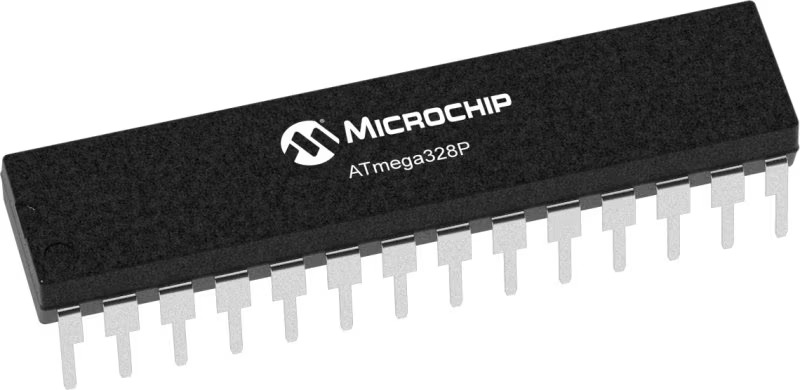
Architecture
AVR
MCU Memory (KB)
32
Silicon Vendor
Microchip
Pin count
28
RAM (Bytes)
2048
You complete me!
Accessories
Click Shield for Arduino UNO has two proprietary mikroBUS™ sockets, allowing all the Click board™ devices to be interfaced with the Arduino UNO board without effort. The Arduino Uno, a microcontroller board based on the ATmega328P, provides an affordable and flexible way for users to try out new concepts and build prototypes with the ATmega328P microcontroller from various combinations of performance, power consumption, and features. The Arduino Uno has 14 digital input/output pins (of which six can be used as PWM outputs), six analog inputs, a 16 MHz ceramic resonator (CSTCE16M0V53-R0), a USB connection, a power jack, an ICSP header, and reset button. Most of the ATmega328P microcontroller pins are brought to the IO pins on the left and right edge of the board, which are then connected to two existing mikroBUS™ sockets. This Click Shield also has several switches that perform functions such as selecting the logic levels of analog signals on mikroBUS™ sockets and selecting logic voltage levels of the mikroBUS™ sockets themselves. Besides, the user is offered the possibility of using any Click board™ with the help of existing bidirectional level-shifting voltage translators, regardless of whether the Click board™ operates at a 3.3V or 5V logic voltage level. Once you connect the Arduino UNO board with our Click Shield for Arduino UNO, you can access hundreds of Click boards™, working with 3.3V or 5V logic voltage levels.
DC Gear Motor - 430RPM (3-6V) represents an all-in-one combination of a motor and gearbox, where the addition of gear leads to a reduction of motor speed while increasing the torque output. This gear motor has a spur gearbox, making it a highly reliable solution for applications with lower torque and speed requirements. The most critical parameters for gear motors are speed, torque, and efficiency, which are, in this case, 520RPM with no load and 430RPM at maximum efficiency, alongside a current of 60mA and a torque of 50g.cm. Rated for a 3-6V operational voltage range and clockwise/counterclockwise rotation direction, this motor represents an excellent solution for many functions initially performed by brushed DC motors in robotics, medical equipment, electric door locks, and much more.
Used MCU Pins
mikroBUS™ mapper
Take a closer look
Click board™ Schematic

Step by step
Project assembly
Software Support
Library Description
This library contains API for DC Motor 25 Click driver.
Key functions:
dcmotor25_forward- DC Motor 25 set forward mode function.dcmotor25_reverse- DC Motor 25 set reverse mode function.dcmotor25_brake- DC Motor 25 set brake mode function.
Open Source
Code example
The complete application code and a ready-to-use project are available through the NECTO Studio Package Manager for direct installation in the NECTO Studio. The application code can also be found on the MIKROE GitHub account.
/*!
* @file main.c
* @brief DC Motor 25 Click example
*
* # Description
* This example demonstrates the use of DC Motor 25 Click board™
* by driving the DC motor in both directions every 3 seconds.
*
* The demo application is composed of two sections :
*
* ## Application Init
* Initializes the I2C driver and performs the Click default configuration.
*
* ## Application Task
* This example demonstrates the use of the DC Motor 25 Click board™.
* Drives the motors in the forward and reverse direction
* with a 3 seconds delay with engine braking between direction changes.
* Results are being sent to the UART Terminal, where you can track their changes.
*
* @author Nenad Filipovic
*
*/
#include "board.h"
#include "log.h"
#include "dcmotor25.h"
static dcmotor25_t dcmotor25;
static log_t logger;
void application_init ( void )
{
log_cfg_t log_cfg; /**< Logger config object. */
dcmotor25_cfg_t dcmotor25_cfg; /**< Click config object. */
/**
* Logger initialization.
* Default baud rate: 115200
* Default log level: LOG_LEVEL_DEBUG
* @note If USB_UART_RX and USB_UART_TX
* are defined as HAL_PIN_NC, you will
* need to define them manually for log to work.
* See @b LOG_MAP_USB_UART macro definition for detailed explanation.
*/
LOG_MAP_USB_UART( log_cfg );
log_init( &logger, &log_cfg );
log_info( &logger, " Application Init " );
// Click initialization.
dcmotor25_cfg_setup( &dcmotor25_cfg );
DCMOTOR25_MAP_MIKROBUS( dcmotor25_cfg, MIKROBUS_1 );
if ( I2C_MASTER_ERROR == dcmotor25_init( &dcmotor25, &dcmotor25_cfg ) )
{
log_error( &logger, " Communication init." );
for ( ; ; );
}
if ( DCMOTOR25_ERROR == dcmotor25_default_cfg ( &dcmotor25 ) )
{
log_error( &logger, " Default configuration." );
for ( ; ; );
}
log_info( &logger, " Application Task " );
Delay_ms ( 100 );
}
void application_task ( void )
{
log_printf ( &logger, " Forward\r\n" );
dcmotor25_forward( &dcmotor25 );
Delay_ms ( 1000 );
Delay_ms ( 1000 );
Delay_ms ( 1000 );
log_printf ( &logger, " Brake\r\n" );
dcmotor25_brake( &dcmotor25 );
Delay_ms ( 1000 );
Delay_ms ( 1000 );
Delay_ms ( 1000 );
log_printf ( &logger, " Reverse\r\n" );
dcmotor25_reverse( &dcmotor25 );
Delay_ms ( 1000 );
Delay_ms ( 1000 );
Delay_ms ( 1000 );
log_printf ( &logger, " Brake\r\n" );
dcmotor25_brake( &dcmotor25 );
Delay_ms ( 1000 );
Delay_ms ( 1000 );
Delay_ms ( 1000 );
}
int main ( void )
{
/* Do not remove this line or clock might not be set correctly. */
#ifdef PREINIT_SUPPORTED
preinit();
#endif
application_init( );
for ( ; ; )
{
application_task( );
}
return 0;
}
// ------------------------------------------------------------------------ END
Additional Support
Resources
Category:Brushed





















